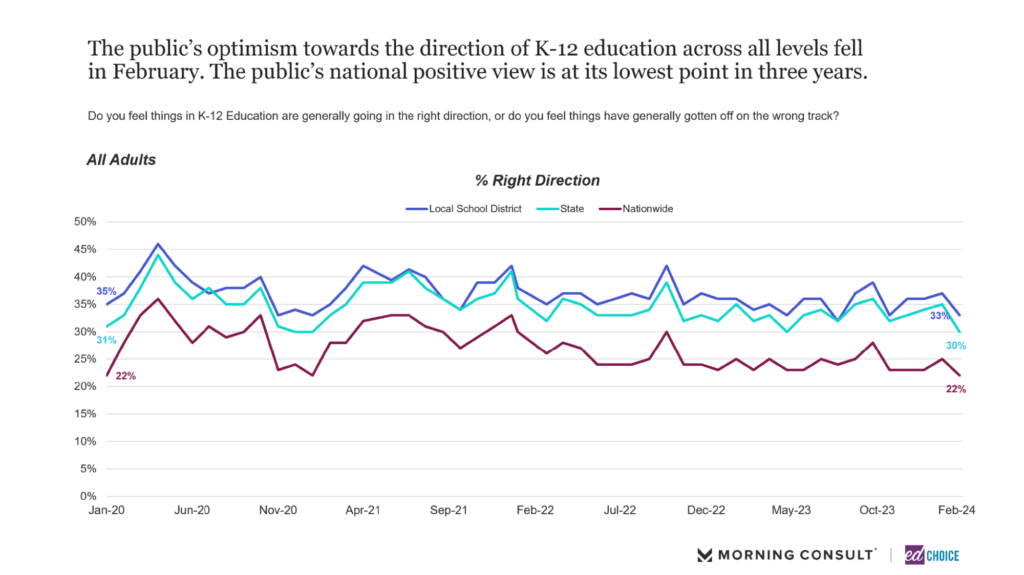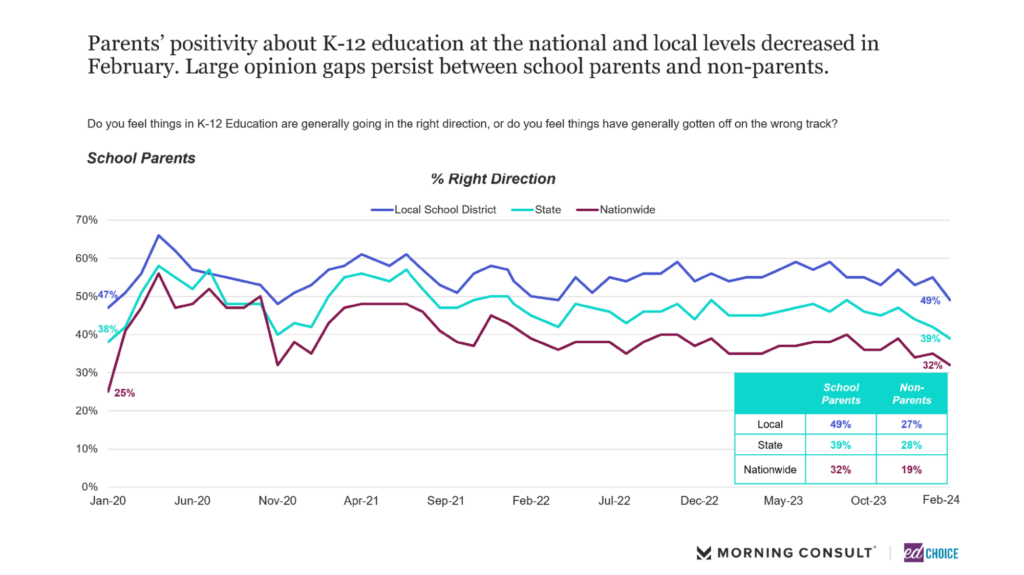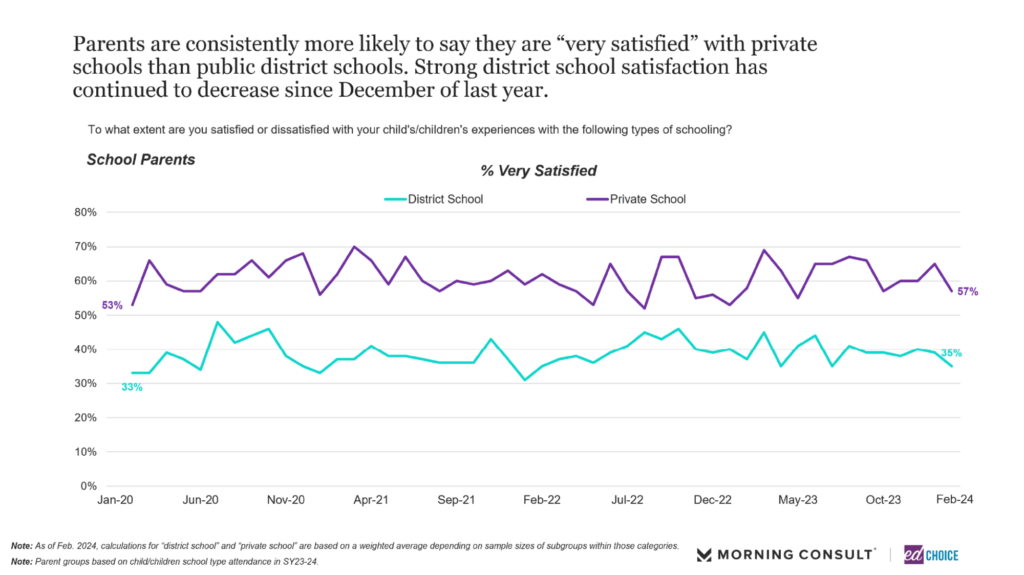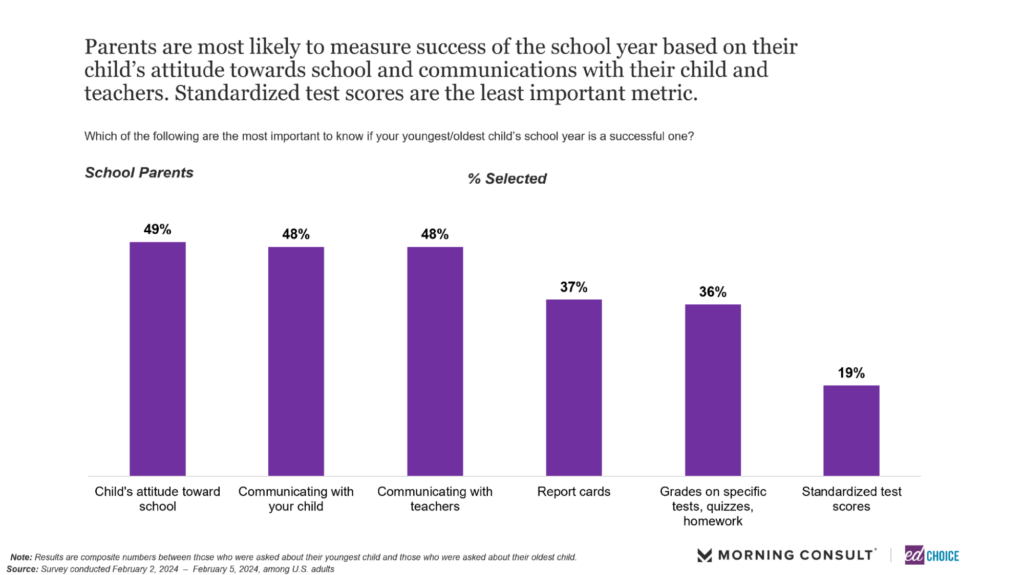Parents and Public Pessimistic on K-12 Education in February Poll
Though the groundhog called for an early end to winter gloom this year, February polling data suggests a shadow remains over the classroom, even as we head into spring. The mood of Americans, including school parents, toward the direction of K-12 education dropped significantly last month. Adding to this atmosphere of pessimism, we also saw a decline in parent satisfaction with their child’s personal experience at school.
In partnership with Morning Consult, EdChoice surveyed a nationally representative sample of American adults 18 and older (N = 2,251) from February 2-5, 2024. With additional sampling, we obtained responses from 1,302 parents of children currently in K-12 education.
Each month, we ask our respondents a broad question on their feelings about the direction of K-12 education as a whole, to gauge whether Americans think the educational system is going in the right direction or is on the wrong track. In February, public optimism toward the direction of K-12 education fell to its lowest point in three years. Only a third (33%) of Americans feel that things are going in the right direction in their local school district, and a slim 22% are optimistic about education at the national level.
We have asked this question every month since January 2020, and these February numbers mark a low point that hasn’t been seen since schools were contending with the height of the COVID-19 pandemic. Concern for the direction of K-12 education is especially high among white adults, conservatives, and low to middle income adults.

While school parents remain more positive than the general public about K-12 education, their mood dropped in February as well. Only 49% of parents feel things are on the right track in their own school district, and 32% are optimistic about education nationwide. Similarly to American adults overall, parents’ decreasing confidence in K-12 education has reached the lowest levels since 2020.
As a point of reference, we ask a general question about how respondents feel when thinking about the future. In February, 46% of adults and 52% of school parents described feeling optimistic. Americans are feeling concern about the state of K-12 education that can’t be fully explained by general worries for the future.

To get a closer look at individual schooling experiences, we also ask school parents to rate their satisfaction with their own children’s school. Correspondingly, the percentage of school parents who report that they are very satisfied with their child’s experiences in a traditional public school has continued to decline since December of last year. Only 35% of district school parents said that they feel very satisfied with their child’s school last month—down from 43% in December. In comparison, 57% of private school parents were very satisfied with their child’s schooling experience in February. Although about half (49%) of district school parents indicate they are somewhat satisfied with their child’s school experiences, this tepid approval might provide some insight into the high levels of pessimism on K-12 education.

The information parents are using to make these judgements is mostly coming from communication with their children and teachers about the school year. We asked parents how they know if their child’s school year is successful. Half of parents said they measure success based on their child’s attitude towards school (49%), communicating with their child (48%), and communicating with teachers (48%). Fewer parents place importance on report cards (37%) and grades on specific assignments (36%), and the least important metric for parents is standardized test scores (19%). Perhaps conversely, another recent poll What Do Parents Want? shows that 84% of parents believe that standardized test scores tell us “a lot” or “some” about school quality. But whether parents are relying on test scores or talking to their children about school, they are clearly finding cause for concern about the direction of K-12 education across the country more generally.

For a full review of the findings, read the full survey report.
Visit the EdChoice Public Opinion Tracker site to access past reports, crosstabs, and questionnaires. We update our national and state dashboards every month. We also provide a more in-depth description of our research and survey methods.
Our K–12 education polls archive is updated on a rolling basis, roughly a few times each month. Please don’t hesitate to let us know if we are missing any surveys, or if there are accidental errors.




